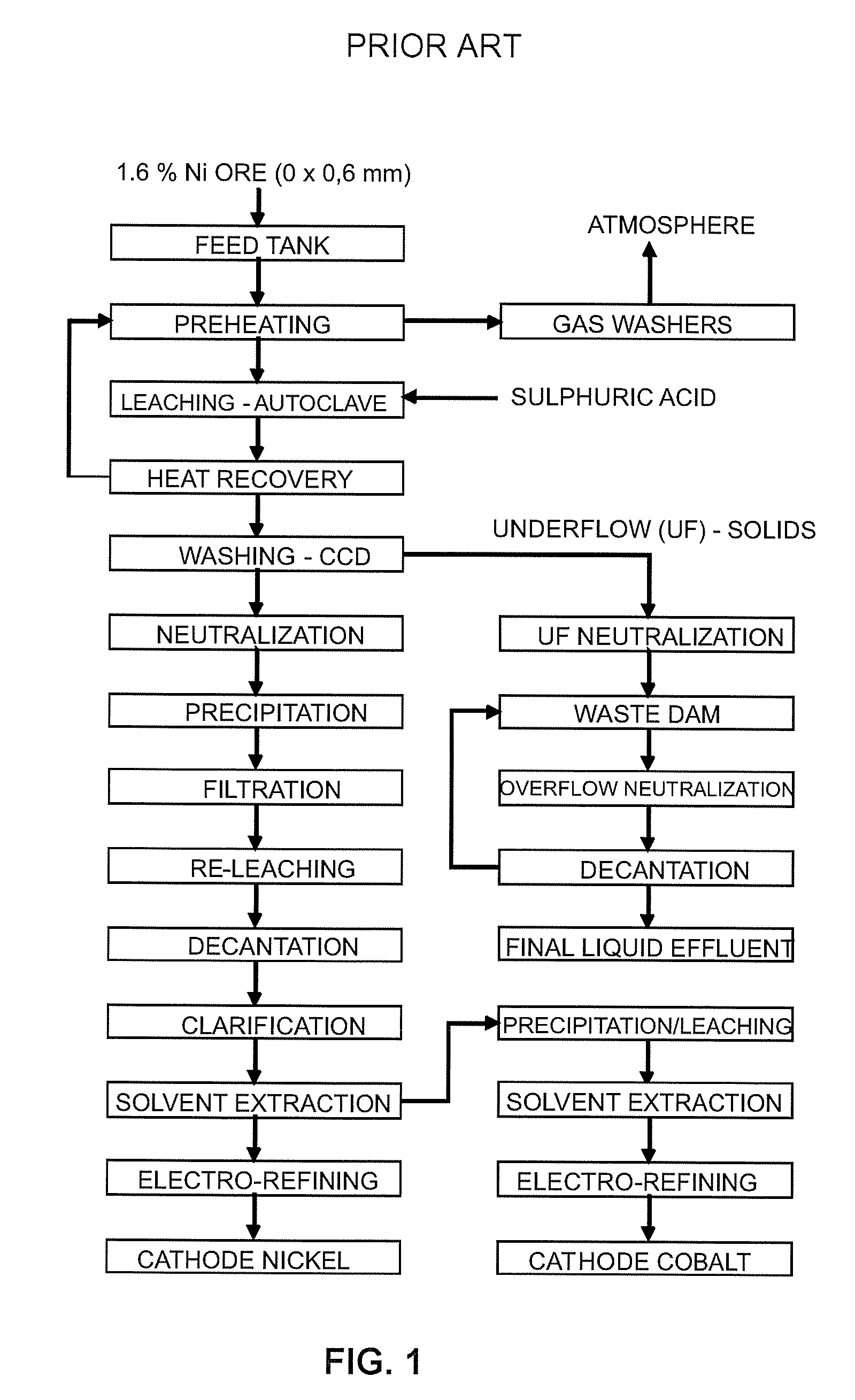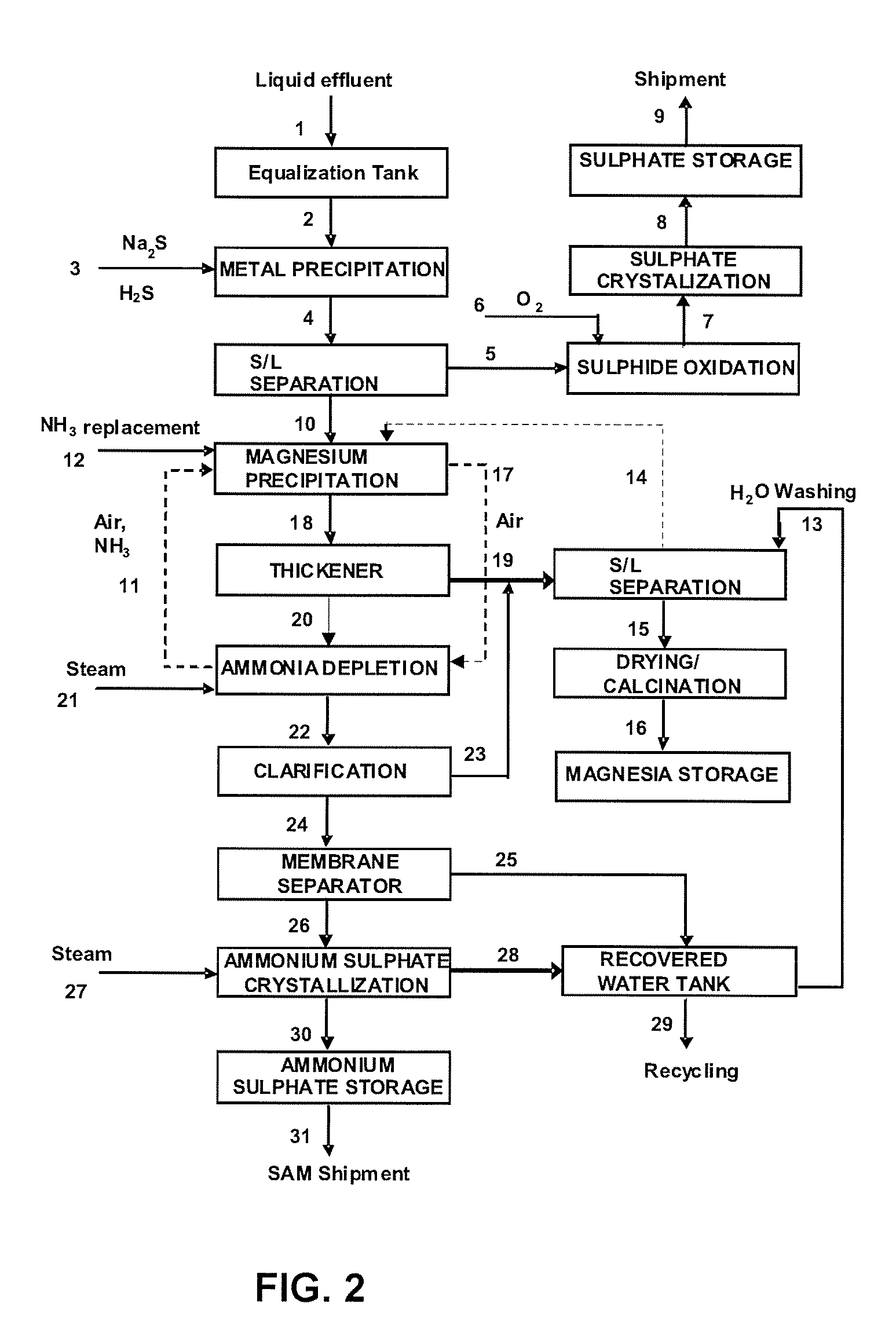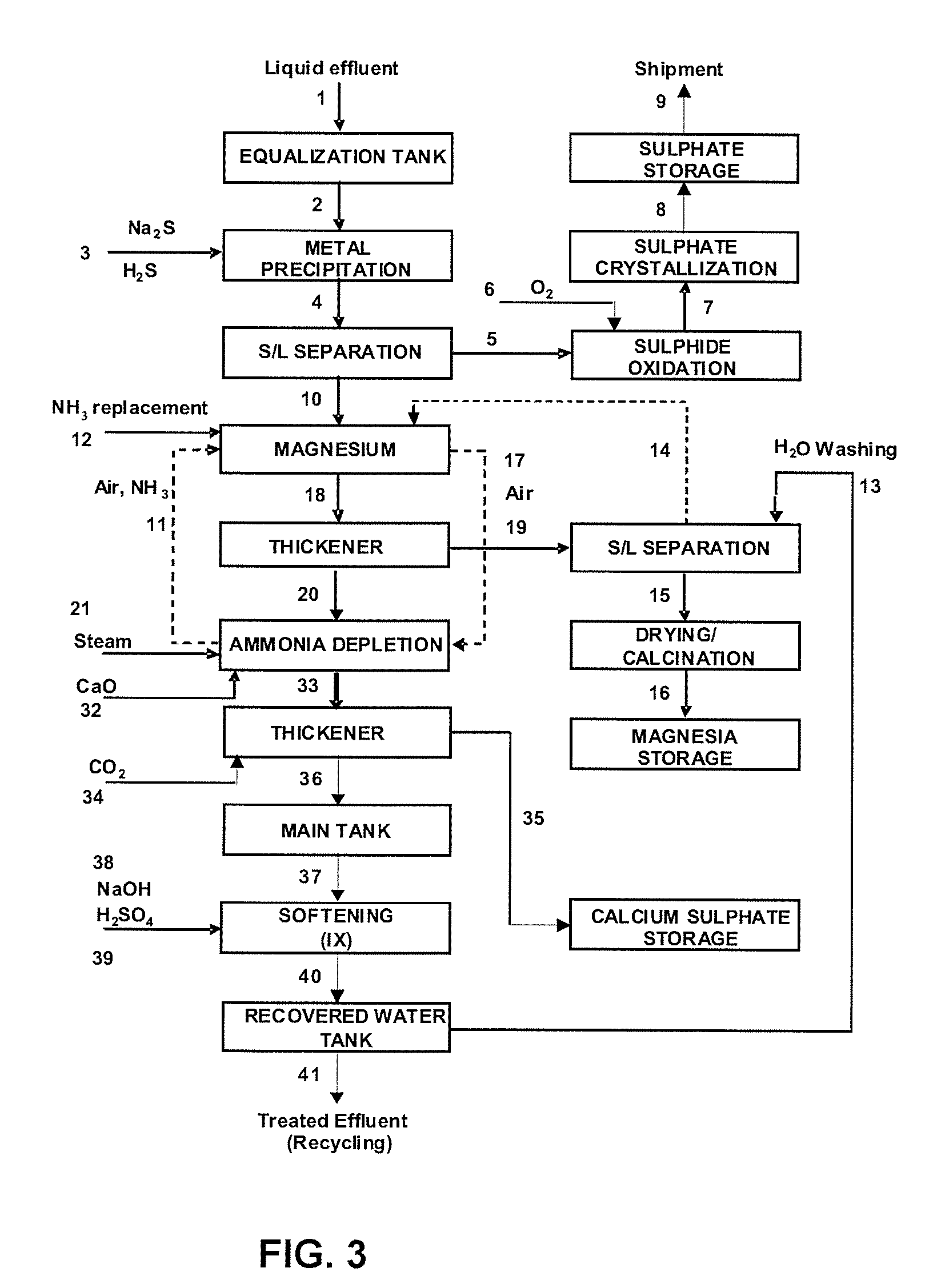Liquid and solid effluent treatment process
- Summary
- Abstract
- Description
- Claims
- Application Information
AI Technical Summary
Benefits of technology
Problems solved by technology
Method used
Image
Examples
example
[0055]Simulation tests of the process under the present patent performed in laboratory scale showed the possibility to obtain byproducts (solids, recyclable) with business value and recovered water with proper quality for reuse in industrial process, which allows to reach the condition of zero effluent as to liquid effluent emissions. Table 2 shows evolution of quality of liquid effluent in the course of treatment process under the present patent.
TABLE 2Evolution of quality of the effluent along the treatment processCom-EffluentAfter Me+nAfter MgAfter SAMponentsUnitJust asprecipitatedprecipitatedcrystallizedNimg / L2.00Comg / L6.00Znmg / L0.900.900.900.90Mnmg / L40.009.009.000.10Femg / L10.000.300.300.30Crmg / L3,450.000.050.050.05Mgmg / L18,000.0018,000.001,555.2062.50SO4mg / L75,000.0075,000.0075,000.00250.00NH3mg / L500.00500.00120,000.00ndpH7.5—10.67.0
[0056]As byproducts, the following have been obtained: (i) magnesium oxide (MgO), with a proper quality for reuse in nickel extraction process, (ii...
PUM
| Property | Measurement | Unit |
|---|---|---|
| Temperature | aaaaa | aaaaa |
| Temperature | aaaaa | aaaaa |
| Fraction | aaaaa | aaaaa |
Abstract
Description
Claims
Application Information
 Login to View More
Login to View More - R&D
- Intellectual Property
- Life Sciences
- Materials
- Tech Scout
- Unparalleled Data Quality
- Higher Quality Content
- 60% Fewer Hallucinations
Browse by: Latest US Patents, China's latest patents, Technical Efficacy Thesaurus, Application Domain, Technology Topic, Popular Technical Reports.
© 2025 PatSnap. All rights reserved.Legal|Privacy policy|Modern Slavery Act Transparency Statement|Sitemap|About US| Contact US: help@patsnap.com



